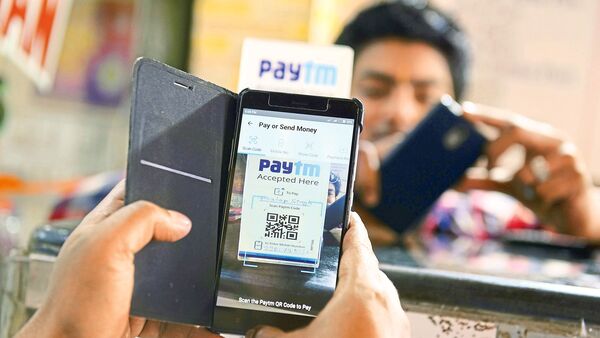Paytm investors have been on a rollercoaster ride since the company raised ₹18,300 crore from its initial public offering (IPO) in November 2021 IPO at a price of ₹2,150 a share. It listed at a big discount and the price slid to a low of ₹438 in November 2022. Since then, the stock has recovered somewhat, climbing back to over ₹700.
Over the past two quarters there have been signs the business is doing well. The company turned an operating profit in Q3 FY23, three quarters ahead of its own guidance, as SnapView wrote earlier. This was followed by excellent Q4 FY23 results, indicating that it could very well become free-cash-flow positive in the near future as it intends.
Operating profit – or earnings before Interest, tax, depreciation and amortisation (Ebitda) – is calculated by deducting operating expenses from revenues, ignoring interest payments on loans (a negligible ₹7 crore) and depreciation of assets ( ₹160 crore). In Paytm’s case, we also have to exclude employee stock options (Esops), which amount to a substantial ₹363 crore a quarter.
In Q4 FY23, the company reported Ebitda of ₹234 crore on operating revenues of ₹2,334 crore. That’s a big improvement from the ₹31 crore Ebitda it reported on revenues of ₹2,062 crore in Q3 FY23. After Esops and depreciation, there was a net loss of ₹168 crore, which is much less than the loss of ₹392 crore reported in Q3.
One reason why there’s been huge volatility in the share price is that Paytm is in several new areas of business that investors can’t value with any great accuracy. But all its major business lines are performing well and it’s been around long enough for us to get a sense of how it makes money.
Paytm connects customers to merchants and while it doesn’t make much money directly from its man-in-the-middle role, it does build relationships with individual consumers and with businesses at the retail level. Those relationships and the data that comes with them translate into an understanding of who is creditworthy and what they might need, which means it can facilitate small loans. The money is lent by somebody else but Paytm picks up a commission.
In addition, it has revenue streams from things like renting soundboxes that confirm payments. It also works as a payment bank, picking up interest on the cash it holds in digital wallets, issues co-branded credit cards with various banks, and provides digital protection services to businesses.
Paytm splits its business into divisions such as ‘payments & financial services’ and ‘commerce & cloud services’. The former includes payment services to consumers and merchants, and financial services (including loans). ‘Commerce & cloud services’ includes things like ticketing, credit card transactions, and cloud services for businesses.
In the past fiscal, payments & financial services revenues grew 66% to ₹6,385 crore while cloud and computing services revenue grew 38% to ₹1,520 crore. Loans and loans facilitation grew by 252% to ₹1,540 crore. Paytm makes around 5% on loans it facilitates. It has also rented out 6.8 million payment-confirmation soundboxes to merchants at around ₹100 a month. It has 28,479 sales employees (many of whom are temporary workers).
Paytm’s understanding of the data that accrues to it has helped it turn small loans into a big business. Conventional financial service providers (Paytm works with at least six of these) don’t have this data and it would be too expensive for them to try and judge creditworthiness without it, so they are happy to work through Paytm. Similarly, the company can help issue credit cards to individuals who would be too low down the financial ladder for conventional financial businesses to bother with.
Owing to its first-mover advantage, Paytm has a large marketshare in areas that are inherently monopolistic. It has stitched up the digital wallets segment, for instance. Everyone needs a digital wallet but few need two. The cash you keep in earns you zero interest, but Paytm earns interest on it by parking it with a bank. Similarly, merchants appreciate having an internet-enabled soundbox that immediately confirms a payment, but they don’t need two such devices.
Fintech is a highly competitive business with wafer-thin margins. Having a headstart and a big warchest (thanks to its IPO) gives Paytm an edge. The company targets ambitious levels of penetration, such as 500 million users (it currently has around 90 million active monthly users) and 100 million merchants (it currently has 34 million). This would essentially require picking up over 80% of current smartphone users.
The founder says he’s interested in artificial general intelligence (AGI), which he sees becoming part of everyday life. This is an unexplored area, of course, but it will be interesting to see what Paytm intends to do in this space.
Download The Mint News App to get Daily Market Updates.
More
Less
#light #tunnel #Paytm
